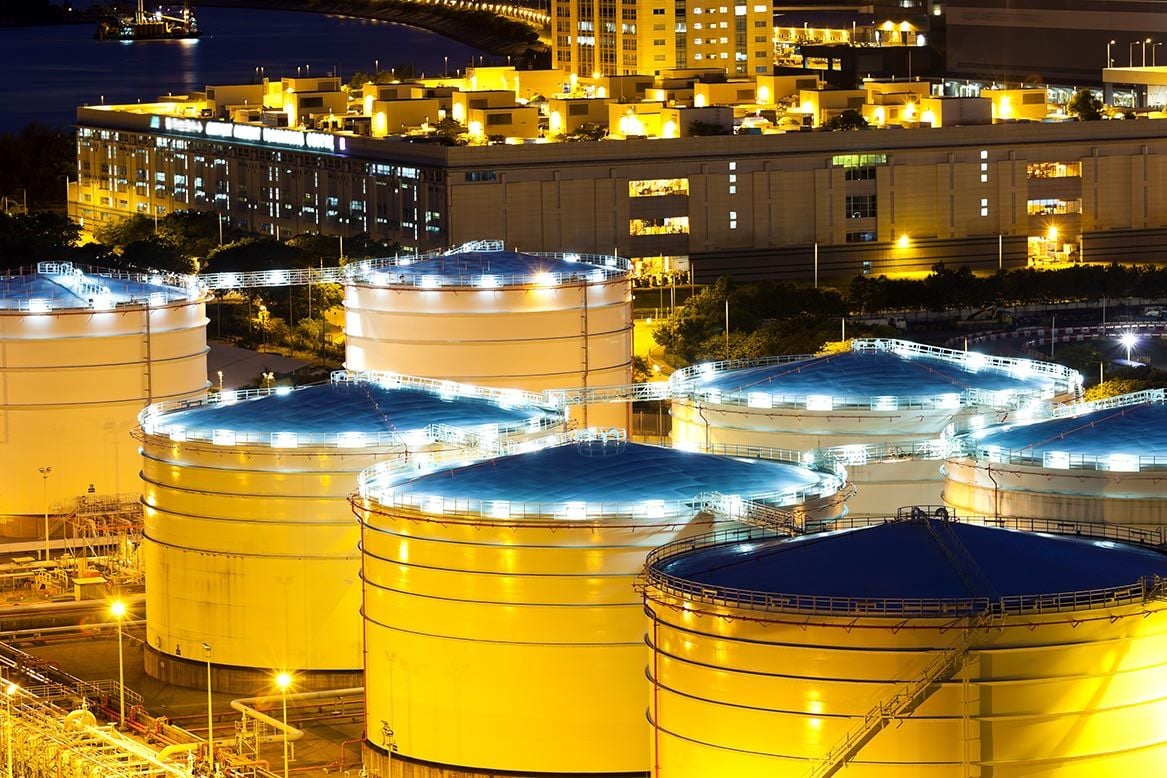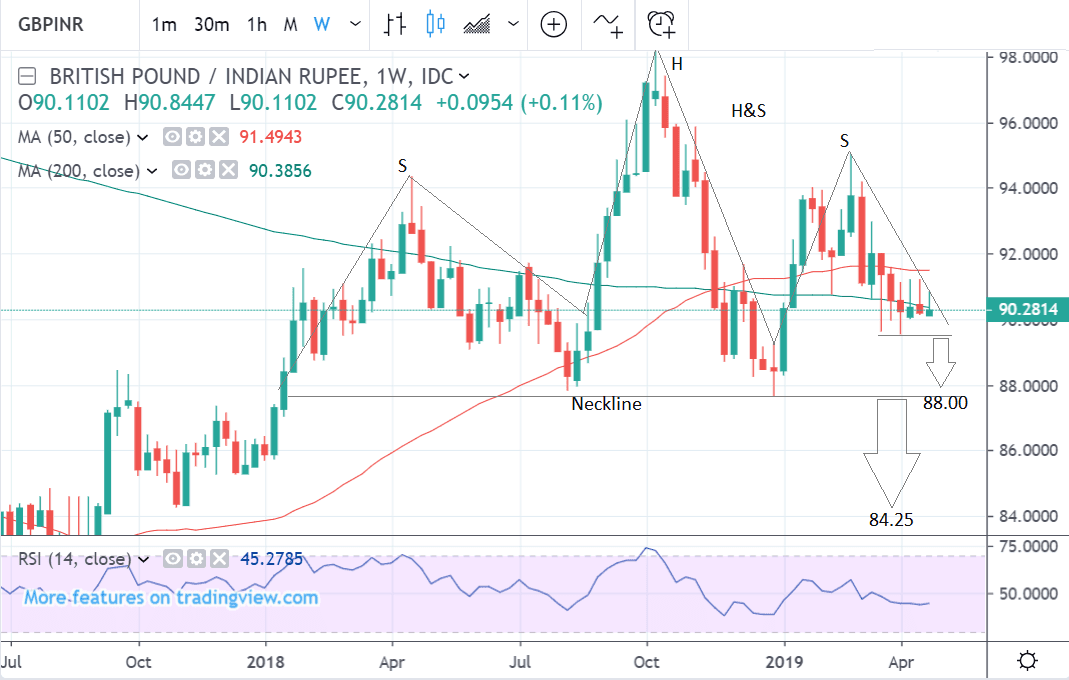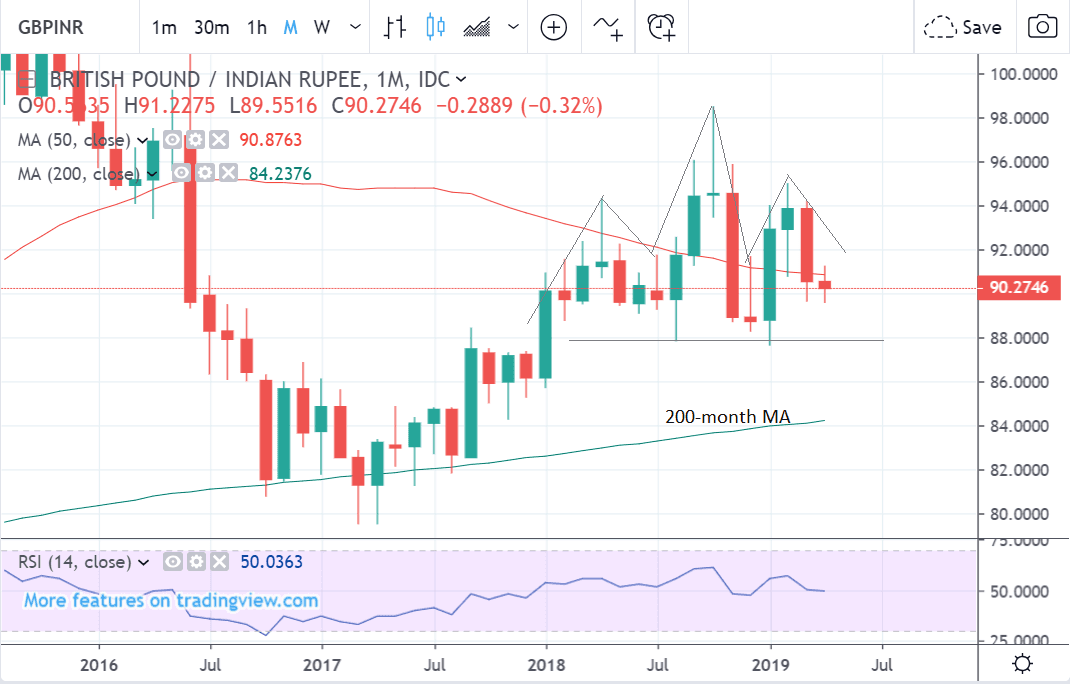Pound-Rupee Rate Still Pointed Lower but Outlook Could Depend on Oil Price Developments

Above: Moves in global oil prices could be a key driver of INR direction over coming days. Image © Jess Yu, Adobe Images.
- GBP/INR forms a head and shoulders reversal
- Break below 88.00 ‘neckline’ key to extension lower
- Oil price movements will matter for Rupee over coming days
The Pound-to-Rupee exchange rate is trading at 90.25 at the time of writing, down barely a tenth of a percent over the course of the past week.
The pair is in a sideways trend on the daily chart within a broader downtrend and the bearish decline all through March tilts the outlook to marginally bearish, given the old adage that ‘the trend is your friend’ - more weakness is, therefore, expected.
From a technical perspective, the outlook is overall bearish because of the large head and shoulders (H&S) reversal pattern on the weekly chart.
The H&S is composed of a peak ‘the head’ in the middle of two slightly lower peaks either side: ‘the shoulders’. The neckline connects the intervening trough lows and is used as a confirmation level. If the exchange rate breaks below the neckline it confirms more downside.
A break below the neckline at 88.00 would give the go-ahead for a deeper decline down to a target at roughly 84.25, at the level of the 200-month MA, a key support level for the pair.
The exchange rate has not yet reached the neckline, and is currently being supported by the 200-week MA in the 90.90s. This would first have to be broken before expecting more downside.
A clear break below the 89.60 March 21 lows, however, would confirm clearance and open the way down to the next target at 88.00. A break below that would then provide the go-ahead for deeper declines.
The daily chart shows the pair in sideways trend. Recently the market has plateaued after trending lower in March.
A break below the 89.60 lows would be required for confirmation of more downside to the next target at the 88.00 neckline.
Time to move your money? Get 3-5% more currency than your bank would offer by using the services of foreign exchange specialists at RationalFX. A specialist broker can deliver you an exchange rate closer to the real market rate, thereby saving you substantial quantities of currency. Find out more here. * Advertisement
Oil Prices, Politics Dominate INR Agenda
The general elections in India will be a key domestic drivers for the Rupee over coming days.
The governing BJP party is expected to win based on poll results and this would be positive for the Rupee because of their economic reform and modernisation agenda.
Tuesday concluded the voting in what are considered the bellwether states of Gujarat, Kerala, and Karnataka.
There are 4 more rounds of voting to come in the world’s largest election involving over 900 million voters in total, but this is the largest phase so far.
Mahendra Modi’s ruling Bharatiya Janata Party and the main opposition party will face off directly in Gujarat.
In the previous national election in 2014, the BJP won all the seats in the state but the opposition Democratic Congress (DC) expects to make headway after a stronger than expected performance in the 2017 state elections.
Nevertheless BJP is likely to win the overall elections and give a positive boost to INR.
How Far can Oil Prices Rise?
Oil prices have risen after President Trump tightened sanctions against Iran on Monday, and this is generally considered negative for the Rupee, since the country has to import much of its oil and higher oil prices can cause a deepening of the trade deficit.
Trump’s decision to end special exemptions from sanctions, or ‘waivers’, for certain countries - such as China, South Korea, and India - led to another rise in the market - WTI crude is now trading at $64.45 per barrel, a new record high for 2019.
If it continues rising it will start to put downwards pressure on the Rupee.
Analysts at Barclays see the end of waivers adding potentially $5 per barrel leading to a rise to an eventual target at $70 p/b.
Analysts at Goldman Sachs are not as bullish as some on oil despite the spike due to the announcement of the end of waivers. They see oil remaining at its current level and not going much higher in H2.
They argue the OPEC+ agreement to cut consumption may falter in the middle of the year.
John Higgins, an economist at Capital Economics thinks the rally in oil will not last because the global economy is slowing down.
"We doubt that this will last," says Higgins. "We still think that oil prices will fall sharply by the end of this year."
Time to move your money? Get 3-5% more currency than your bank would offer by using the services of foreign exchange specialists at RationalFX. A specialist broker can deliver you an exchange rate closer to the real market rate, thereby saving you substantial quantities of currency. Find out more here. * Advertisement


